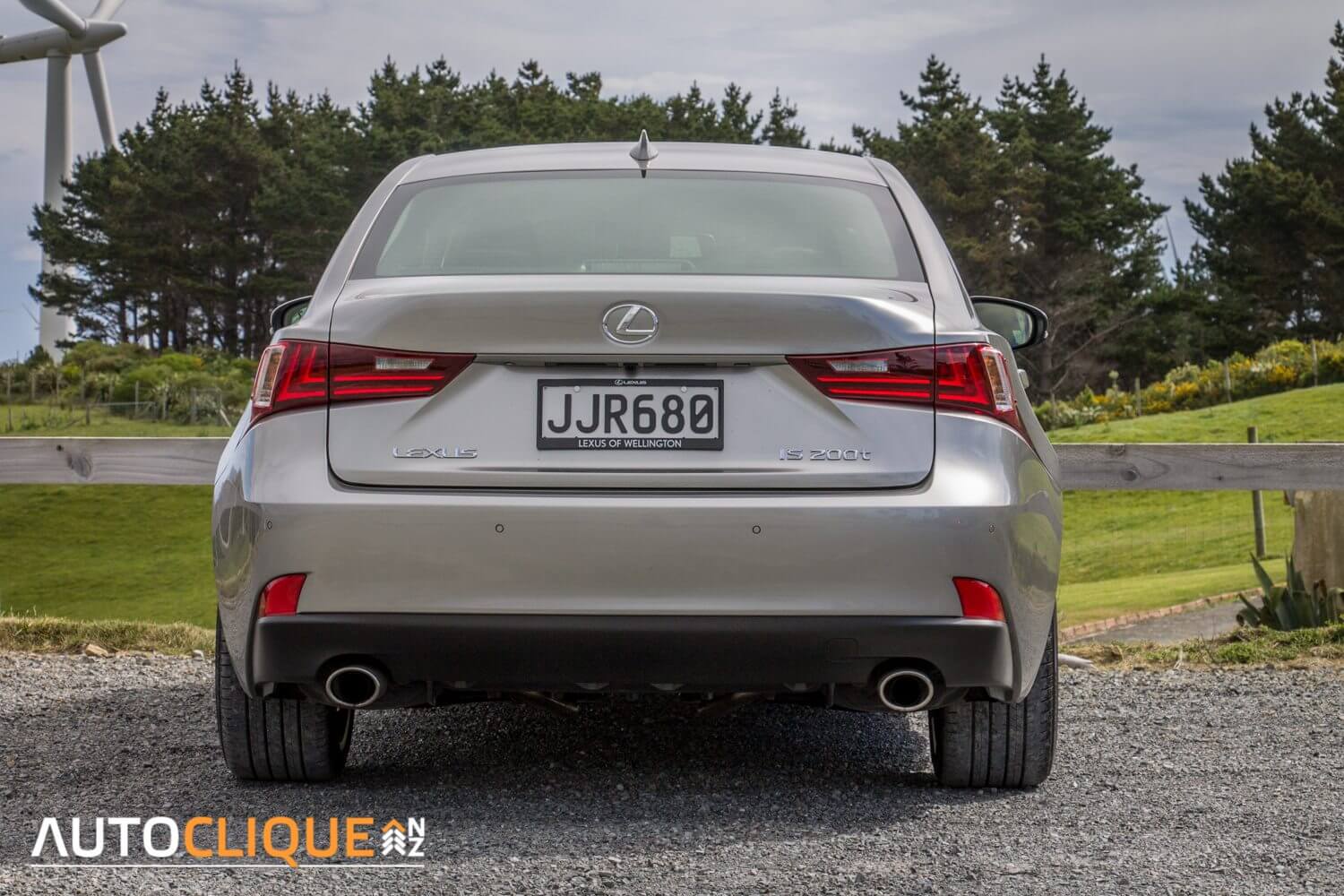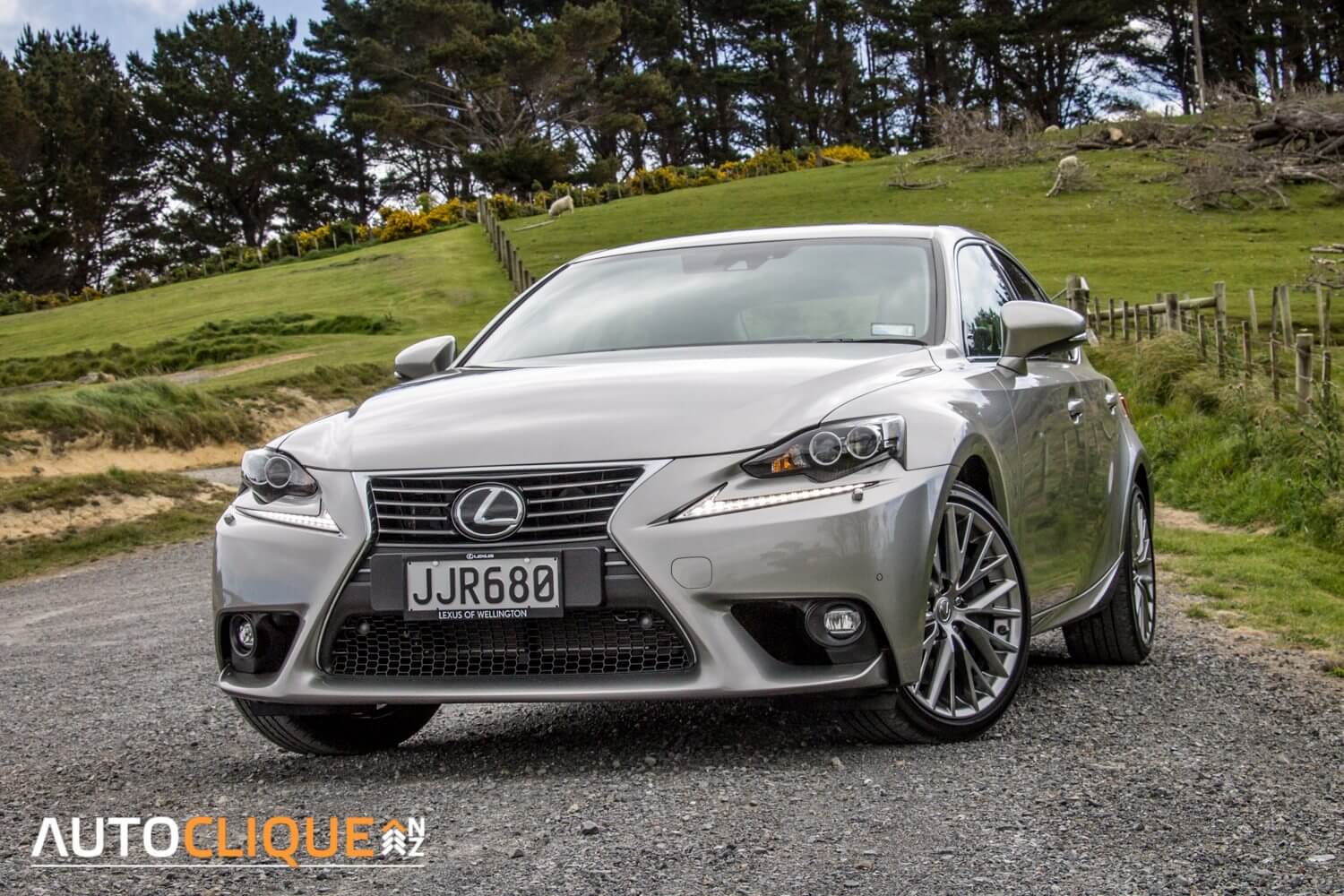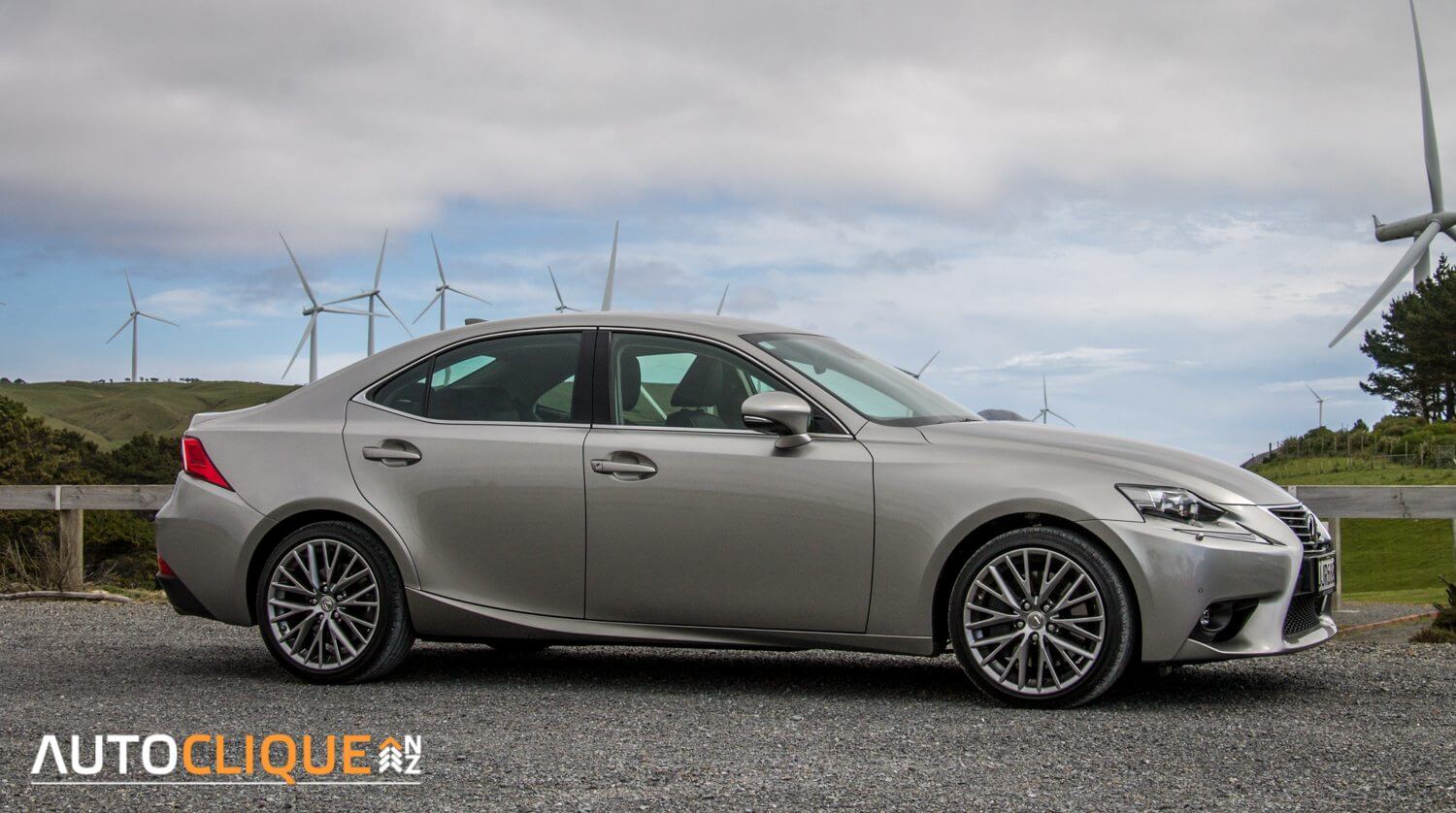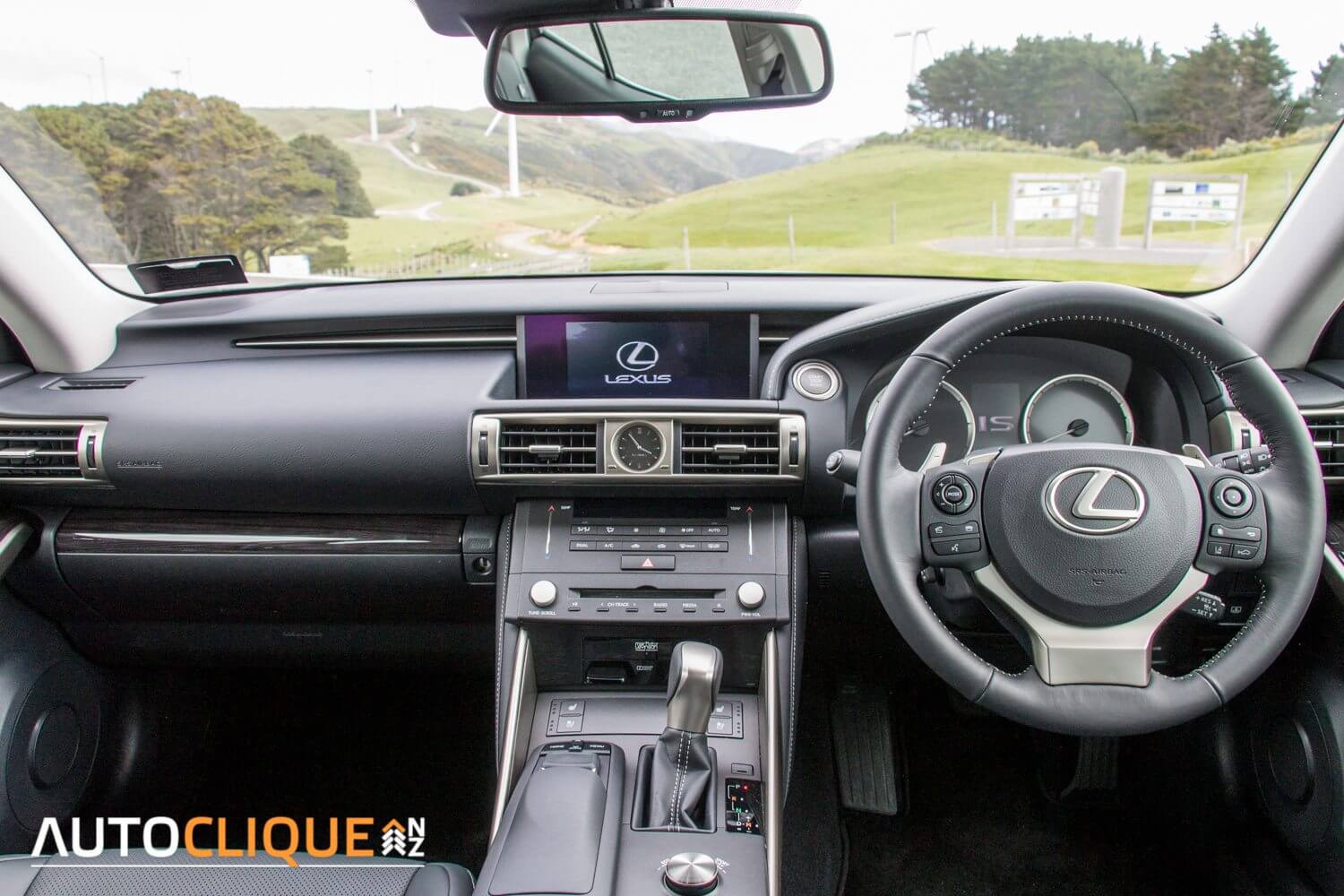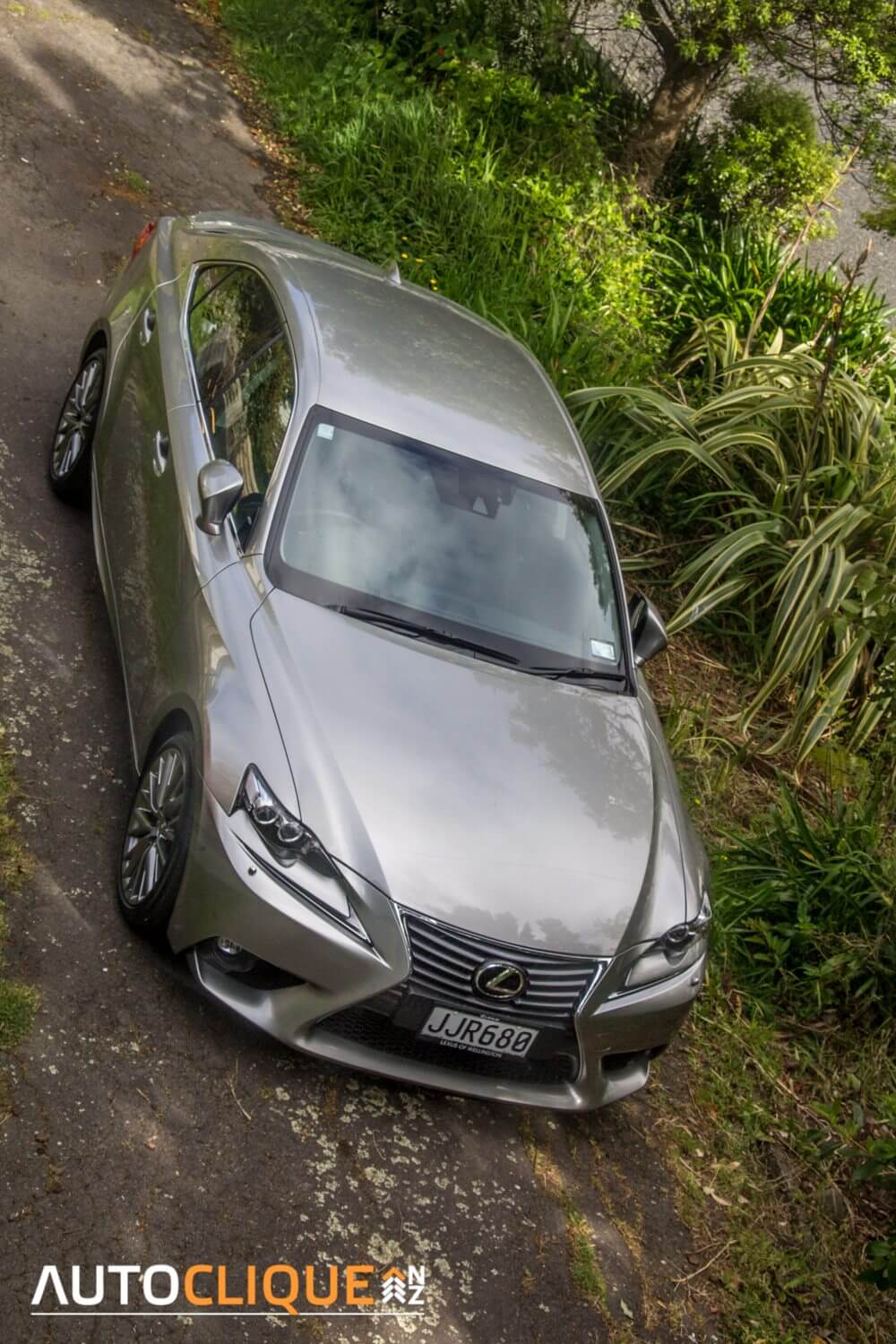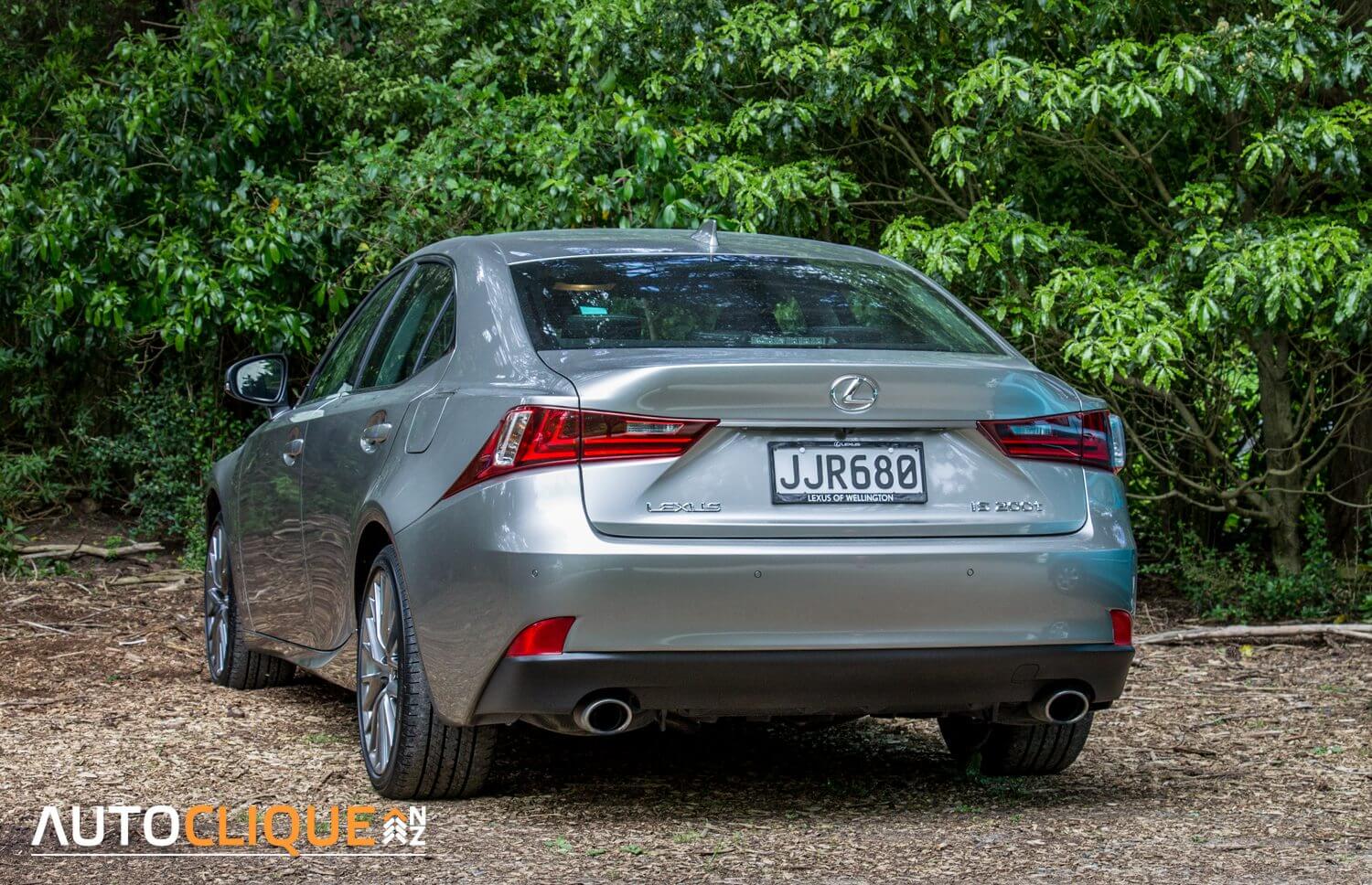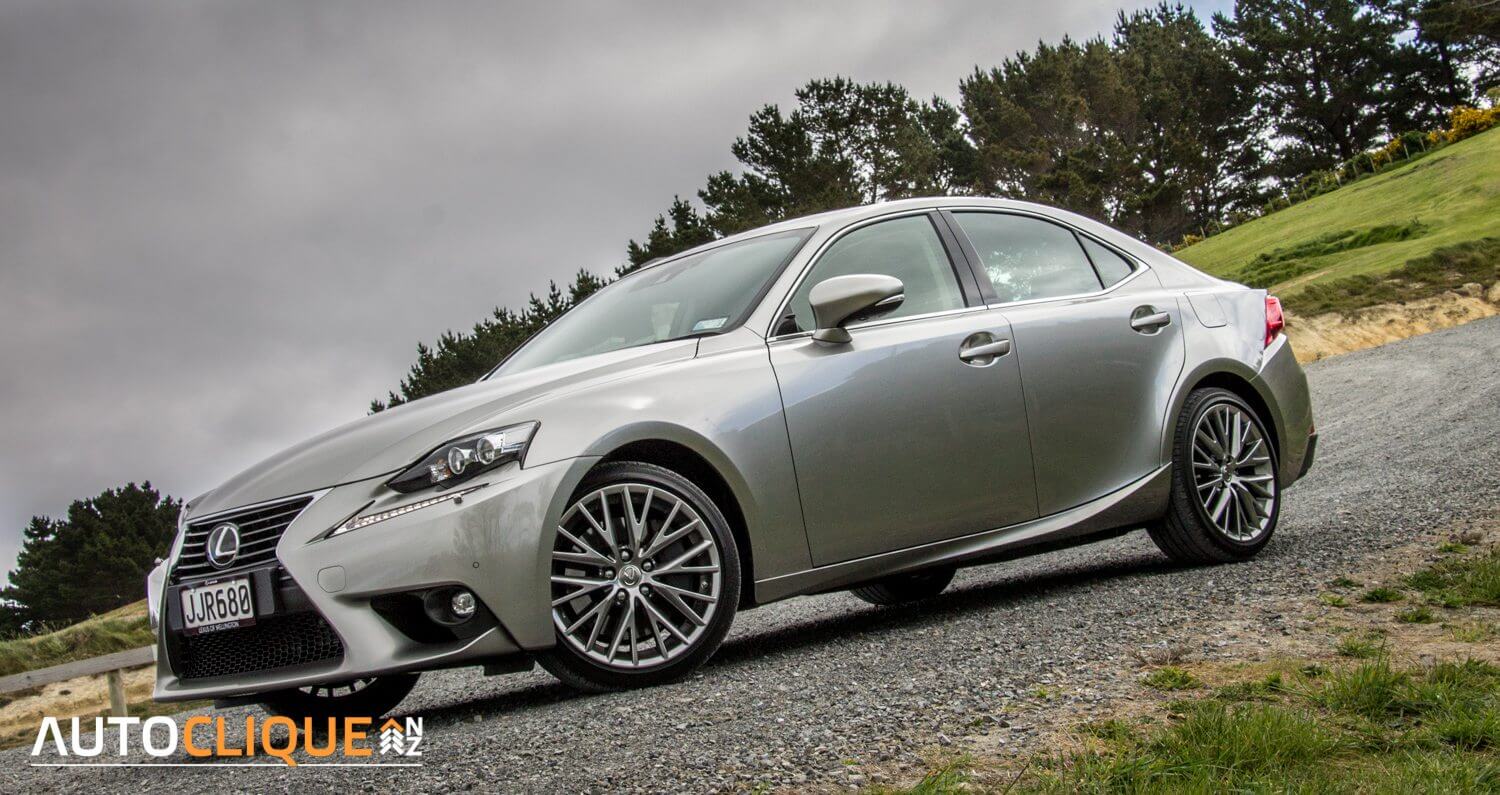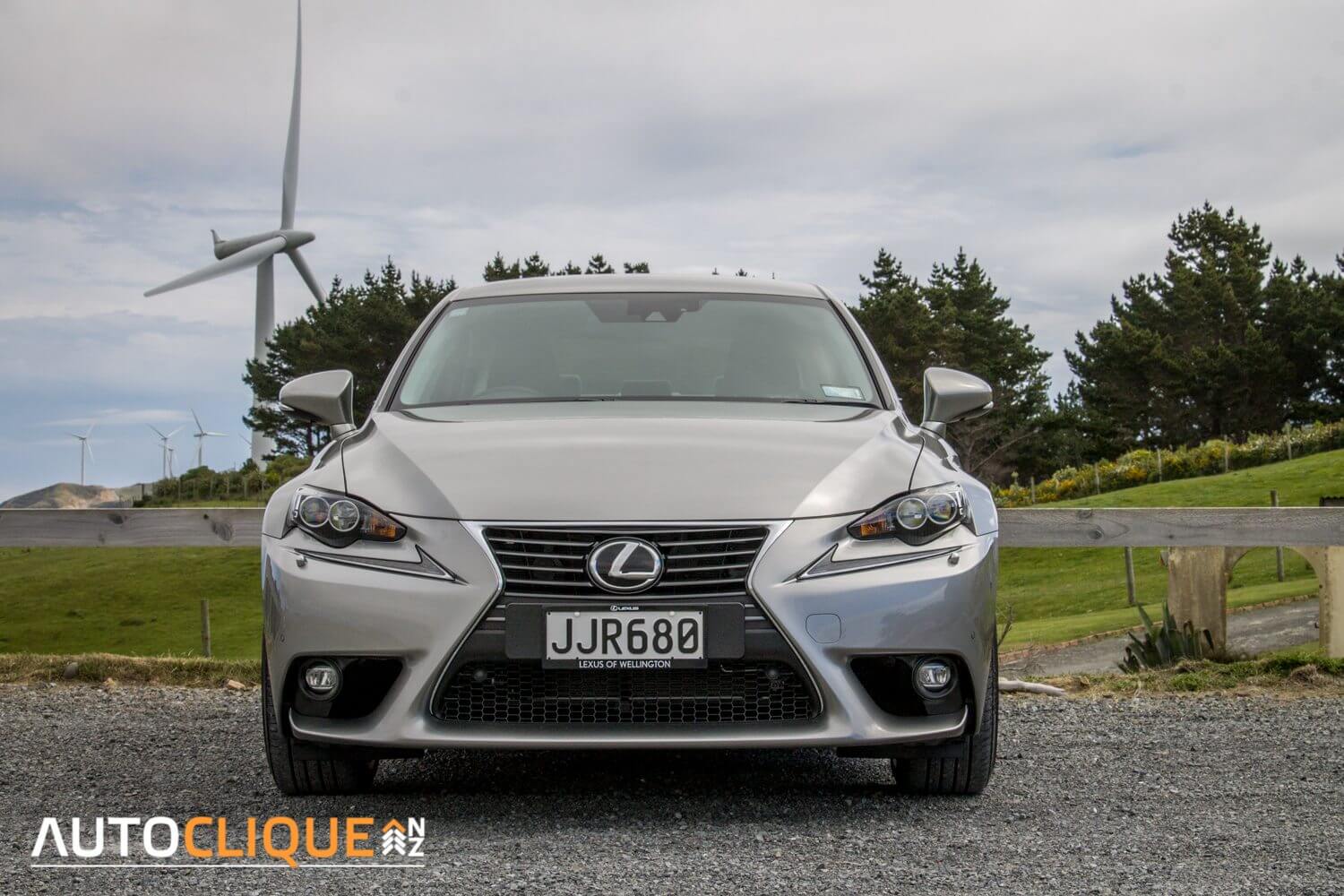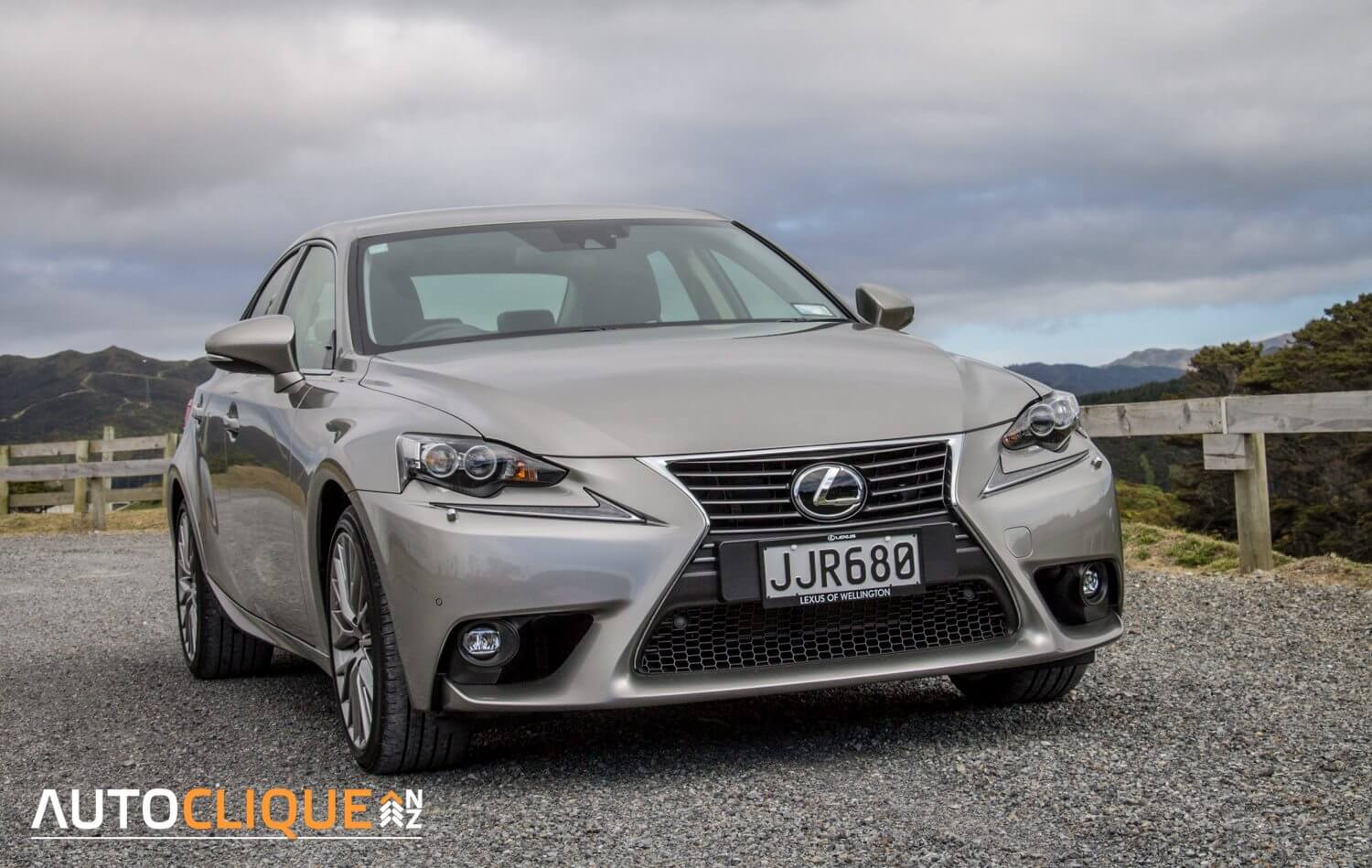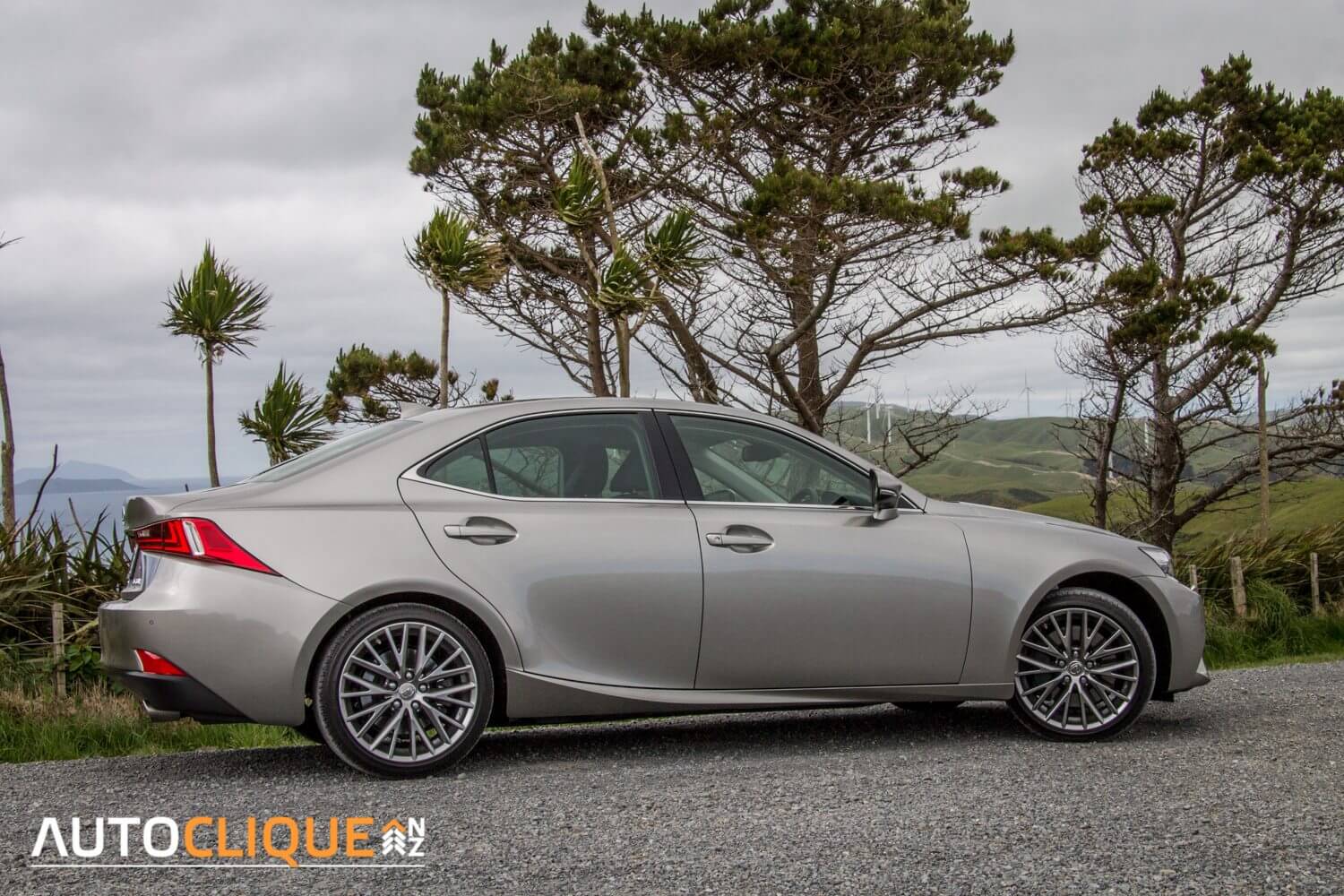Lexus, like most manufacturers, is moving from larger capacity, normally aspirated engines towards smaller capacity turbos. The turbo makes up for the lost power and torque whilst maintaining efficiency. This is probably the biggest change in the new IS200t, which replaces the IS250. It may have two fewer cylinders, but it’s up by 27kW and an impressive 98Nm. It’s over a second quicker to 100kph than the outgoing model but uses nearly 19% less fuel.
There are three trim levels in the IS200 range – the standard IS200t, IS200t Limited and F-Sport. All have the same engine and performance with the 2.0 turbo mated to an eight speed automatic transmission driving the rear wheels. The Limited spec, tested here, has the following features over standard : 18” wheels, Mark Levinson 15-speaker stereo with amplifier and sub, seat/mirror/steering wheel memory system, Lane Departure Alert, power steering wheel adjustment, wood trim, centre console side knee pads, power rear window sun shade, LED headlights with auto high beam, blind spot warning, auto retracting and auto dimming mirrors. There are some pretty cool features here, but there’s a $12.5k difference between trim levels.
The F-Sport sits in between the other two at $10k over the standard model. For this, you get a similar spec to the Limited but with some sporty differences including a cool, 8” TFT LFA inspired digital dash incorporating various gauges, Adaptive Variable Suspension, Sport style steering wheel and gear selector, 18” wheels, sports seats and F-Sport bumpers.
First Impressions
I know it’s a subjective thing, but I really like the looks of the IS200t. At first it seemed a bit busy with the slashes and angles, but upon further inspection, I think it’s great. Smart and executive without too much bling. I’m not normally a fan of silvers, but the metallic Titanium our test car came in really suited it.
Inside, the Lexus is a lovely place to be. Slide into the supportive and comfortable black leather driver’s seat and you’re cocooned by the high centre console and curving dash. Everything is perfectly to hand, just where you want it. The leather covered wheel is nicely shaped for grip, and is fat enough to feel satisfyingly sporty. Close the door and it makes a muted but satisfying thunk. Click your seat belt into place and the seat and steering wheel motor into their last set positions. There are three memory slots for seat and wheel positions, and both adjust electrically. The driver’s seat has electrically adjustable lumbar support too.
Press the start button and the previously blank black dials spring into life as the engine fires up, the white numbers fading into existence as a Leus logo animates on the two screens. There’s a central LCD between the speedo and rev counter as well as a bigger screen in the dash for the satnav, entertainment system and reversing camera.
On the road the IS200t feels very refined. You can feel the bumps, but they’re dealt with beautifully by the suspension. It’s very well insulated with minimal road noise, and I never noticed any wind noise at all. The door rubbers look like rubber cushions and really do their job. The electric power steering is very light. It felt too light for my liking in normal driving, but on the twistier roads it seemed to firm up and I didn’t notice the lightness. The Lexus is pretty fast too, with a 0-100kph time of 7 seconds. The eight-speed automatic transmission and 2.0 turbo engine work really well together to give very smooth and linear acceleration. It can be deceptive sometimes as it’s so smooth that you can be going faster than you realise.
After a relaxing drive home I pulled up into my drive and stood back to admire the IS. I was really liking this car.
What’s it like to live with?
I used the IS200 for nearly a week for the school run, commute to work and a couple of trips, and it really is a great car. It’s very comfortable, quiet and refined. It’s an excellent all-round car and has some nice features. I like the little things, like dipping the side mirrors when reversing, and the all-round parking sensors which combine with the reversing camera to make parking simple. There were a couple of times in tight car parks where I was glad of this. Talking of the mirrors, they are heated, electrically adjustable, and have auto-dimming and auto-folding functions.
The seats are very comfortable. They’re heated and ventilated too, so you can either have that strange warm feeling like you might have wet yourself, or have cold air blowing up between your legs. I’m not really keen on either function but I can see that there are situations where they would be great to have. I found the way the driver’s seat and wheel move back when the engine is turned off a bit irritating. I realise it gives more room to get out, but I didn’t like it.
The rear seats are just as comfortable as the fronts. They fold flat and split 60/40 to get longer items into the car. There’s an armrest in the centre with pop-out cup holders. Rear legroom is plentiful. Press a button on the dash and a blind powers up to cover the rear window. I’m not sure how useful this is but it’s cool.
The Mark Levinson 15-speaker stereo is excellent. Crystal clear all the way up to maximum volume, with sufficient bass from the doors and rear subwoofer to vibrate your trousers. It has Bluetooth input, plus an Aux and two USBs hidden in the cubby in the centre console next to a 12v socket. But I did have some issues here. My phone paired to the car without issue and making calls was easy and clear, with the phone’s address book accessible from the central screen. There’s a kind of joystick/mouse control which can be used to select items on the main screen. It works well but it can sometimes be a bit fiddly to click the item you want. But the stereo would only play my MP3 ringtone, and refused to see any of the other music on my phone. Similarly with USB, it just wouldn’t see any music. After trying two USB sticks, re-formatting things and moving files around on my phone I finally gave up and got some CDs out instead.
The satnav is great – it gives clear directions and at each junction the main screen splits into two with a diagram of the junction showing which way to go. The diagram also appears on the smaller LCD in front of the driver..
I’ve driven a Lexus NX before which had radar cruise control and I thought it was excellent, so I was pleased to see it included on the IS. The Lexus also has collision detection warning, which beeps and flashes the display in red if it thinks you’re about to hit something. I used the radar cruise several times and it worked beautifully, even coming to a complete stop in heavy traffic. The IS has the same controls for the cruise control as Toyota, with a third stalk at about 4 o’clock on the steering wheel. I’m not a fan of this, and my colleague Fred has complained about it too. It’s better in the Lexus because the display shows a diagram of the stalk and functions as you press it, so you don’t have to look down to work it out. Once used to the controls I was loving the radar cruise, until it did a couple of strange things that made me lose confidence in it. The first time it was set to 50 and as I was passing a right-turner on the left it suddenly braked hard, presumably thinking I was about to hit the car in the other lane. Then soon after that in an 80kph section of highway it did the same, suddenly braking firmly down to about 55 before I took over. The driver of the car behind (who was driving too close) looked a bit surprised. I didn’t use it after that and Lexus are checking out the car.
The final test was to take the car out on some twisty roads for a bit of fun. In normal driving there always seems to be a very slight delay between pressing the accelerator and the car accelerating. Whether that’s a small amount of turbo lag, or a slight delay for the gears to change down, or something else, I can’t really tell. Once it goes, it’s fast but there always seems to be that slight disconnect, even in Sport mode. Talking of the modes there’s Eco mode, which softens the throttle and forces you to accelerate more slowly, but it’s not as annoying as in some cars, then there’s Normal mode, Sport and Sport+. Sport quickens the throttle and holds the gears for longer and Sport+ minimises the driver aids.
On the twisty back road I slotted the gear selector to the side to enable manual shift mode then used the flappy paddles. The gear shifter can also be used, pushing forward or backwards to change gear. Shifting manually, the delay I had noticed in auto mode was gone and the IS felt much more responsive and quicker to accelerate. Manual mode won’t let you do anything silly, it shifts down when you go too slow or simply beeps at you if you try to select a gear that isn’t appropriate, such as 7th at 40kph. On a fast hill climb the IS took to the task with competence, accelerating and braking smoothly and negotiating the sharp corners with minimal body roll. There was the occasional flicker of the traction control light and if I really pushed things the IS felt like it wanted to understeer.
IS200t vs. BMW 330i
I recently tested the BMW 3 Series LCI, including the direct competition for this car, the 330i. I loved the BMW and I was looking forward to seeing how the Lexus stacked up against it.
Power and torque figures between the two cars are similar, both have an eight speed transmission and both are sold as sports sedans. Each have 2.0 turbo 4 cylinder engines and rear wheel drive. Both are great looking cars. Both cars’ cabins are lovely places to be, with lots of equipment and technology, solid build quality and quality trim.
The best way I can summarise the difference between these cars is that the IS200t feels like it was designed as a luxury car first and a driver’s car second, whereas BMW is the other way around. The Lexus is competent and can make rapid progress down a country road, but drive the same road in the BMW you’ll have a grin on your face. I think BMW have Lexus beaten on technology too with their clever fuel saving, safety systems, and ConnectedDrive integration. The BMW is over a second faster to 100 despite having almost the same power figures, but uses nearly 23% less fuel on the combined cycle.
If it was my money I’d be spending $1600 more on the BMW 330i. It’s a lot more car for the money.
What it’s up against
| Brand / Model | Engine | Power | Fuel L/100km | 0-100km/h | Price Highest to Lowest |
| Jaguar XF Luxury Sedan | 2.0l 4 cyl petrol turbo | 177kW/340Nm | 8.1 | 7.9s | $90,000 |
| Mercedes C250 Wagon | 2.0l 4 cyl petrol turbo | 155kW/350Nm | 6.2 | 6.8s | $89,900 |
| BMW 330i Sedan | 2.0l 4 cyl petrol turbo | 185kW/350Nm | 5.8 | 5.9s | $88,000 |
| Lexus IS200t Limited | 2.0l 4 cyl petrol turbo | 180kW/350Nm | 7.5 | 7.0s | $86,400 |
| Mercedes C250 | 2.0l 4 cyl petrol turbo | 155kW/350Nm | 6.0 | 6.6s | $86,500 |
| Audi A4 TFSI S Line | 2.0l 4 cyl petrol turbo | 155kW/350Nm | 7.0 | 6.5s | $85,400 |
| HSV Clubsport Sedan Auto | 6.2l V8 petrol | 325kW/550Nm | 12.9 | 4.9s | $85,390 |
The good and the bad.
| Pros | Cons |
|
|
What do we think?
The IS200t Limited is a fantastic car and I liked it a lot. It looks good, the interior is excellent, it’s fast, quiet and has some cool technology. If I hadn’t driven the competition I would give it 4.5 stars, despite the issues I had. If you’re looking for a luxurious family car that will get you to your destination quickly and in comfort it’s an excellent choice.
Rating – Chevron rating 4 out of 5
| Vehicle Type | Lexus IS200t Limited |
| Starting Price | $86,400 NZD |
| Tested Price | $86,400 NZD |
| Engine | 4 Cylinder In-line 1998cc turbo,DOHC with VVT-i |
| Transmission | 8-Speed Sport Direct Shift (SPDS) Automatic Transmission with G AI-SHIFT Control and Sport Mode. Uphill downshift control, Downshift Lock up control, Deceleration Flex lock up control, Power saving control. |
| 0 – 100 kph | 7.0 seconds |
| Kerb Weight | 1,620 kg – 1,680 kg |
| Length x Width x Height | 4665 x 2027 x 1430 mm |
| Cargo Capacity | 480 Litres |
| Fuel Tank | 66 litres |
| ANCAP Safety Ratings | 5 stars |
| Warranty | Four-year warranty with unlimited mileage, and protection against corrosion perforation for six years. |
